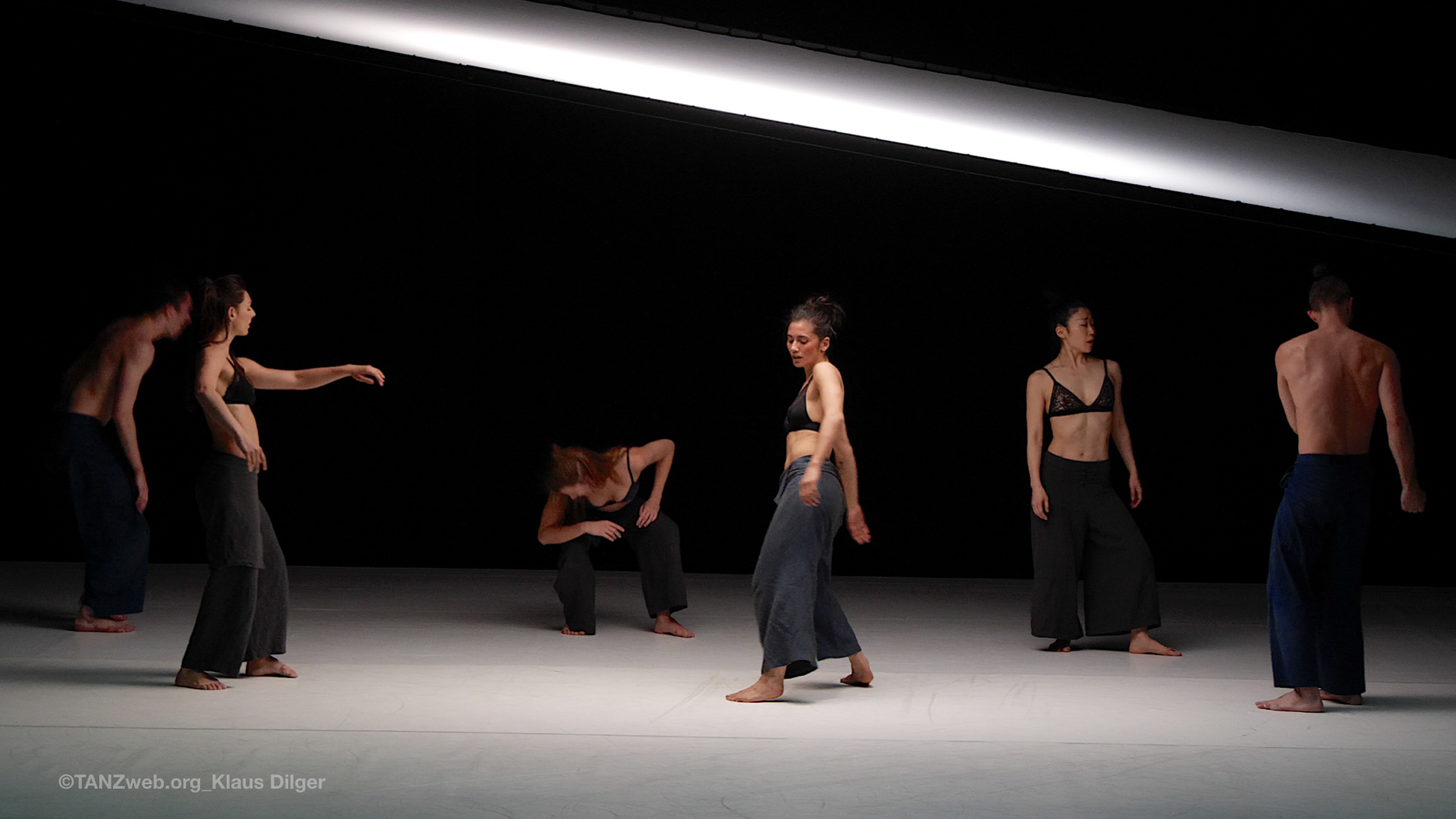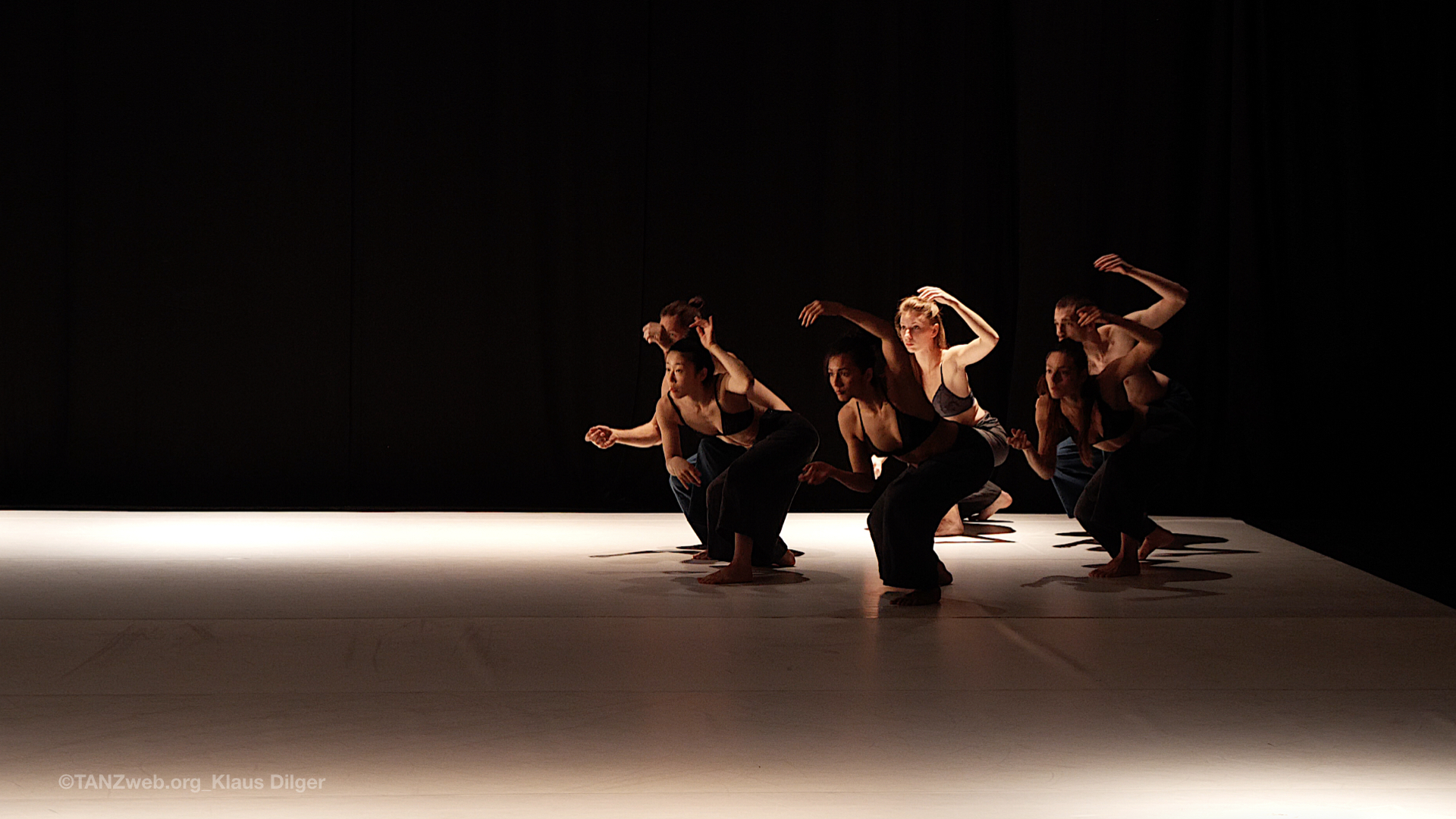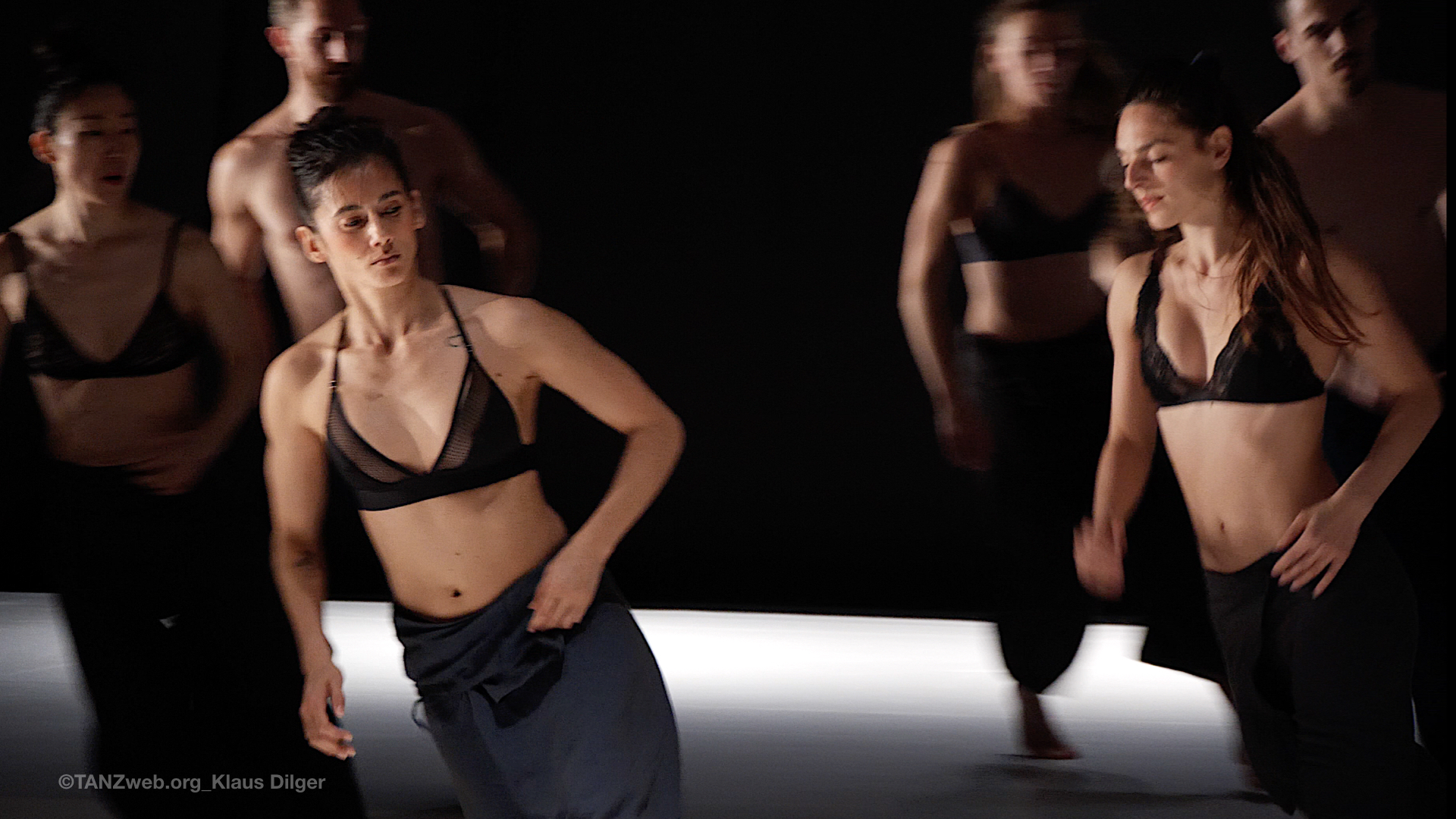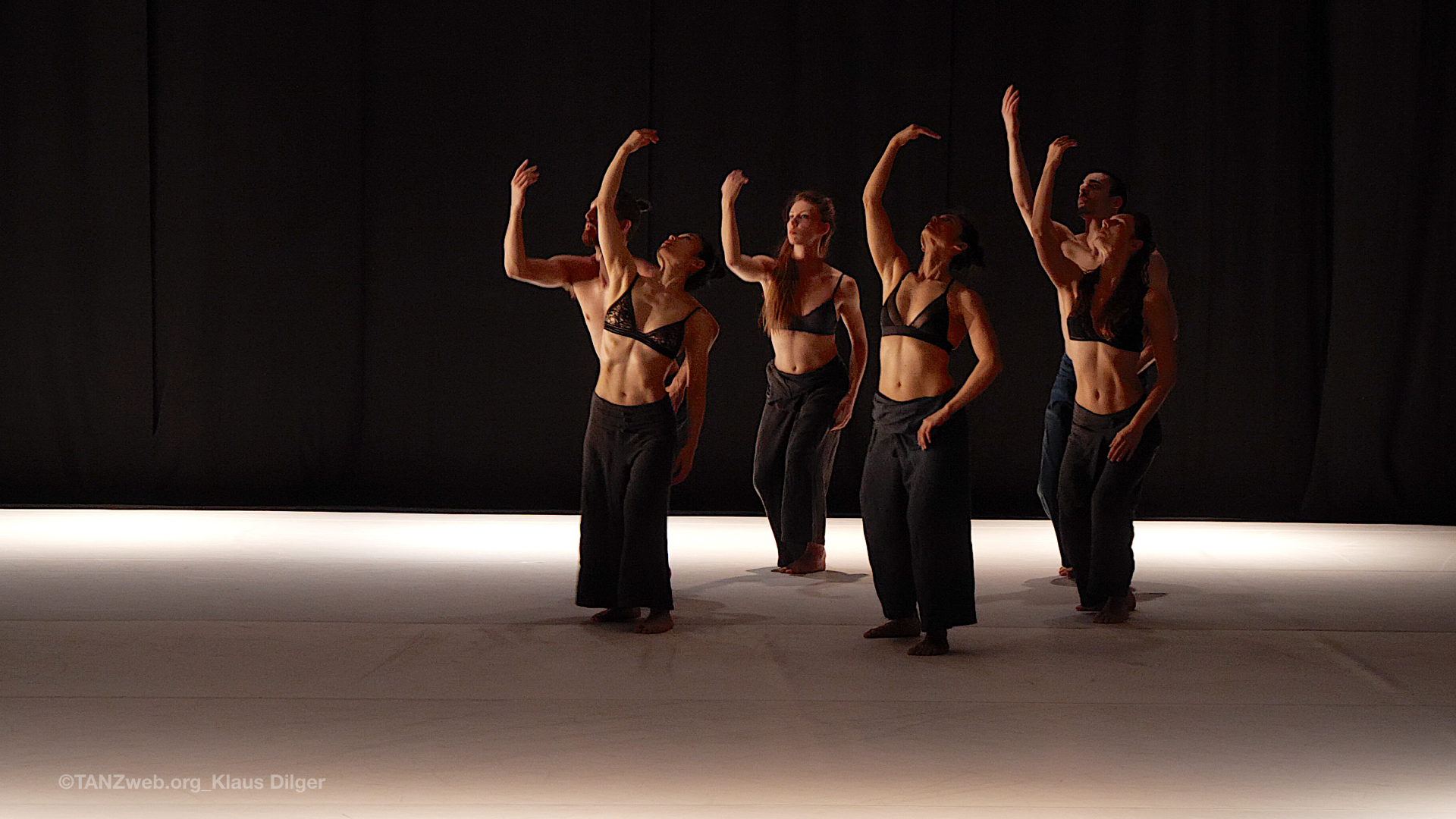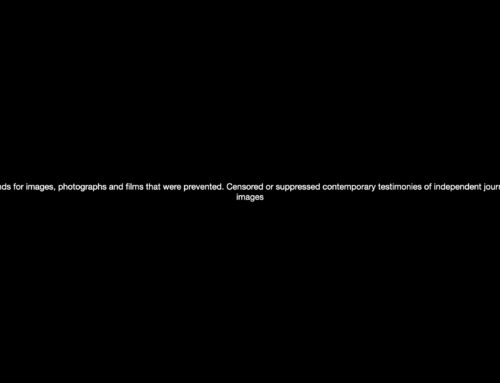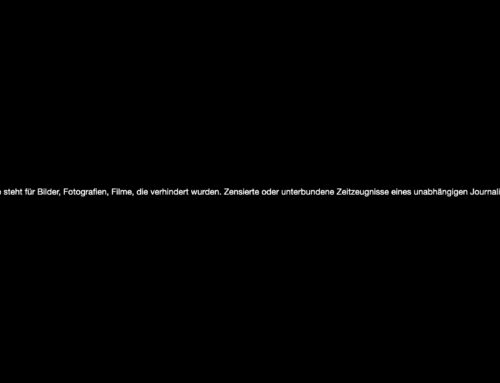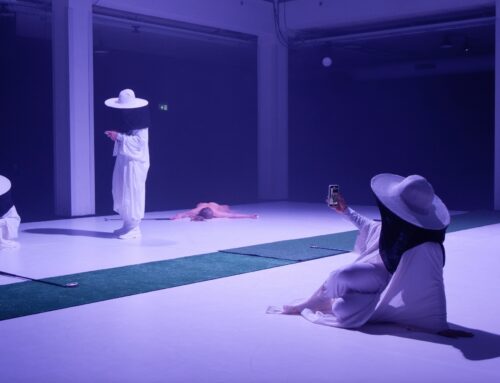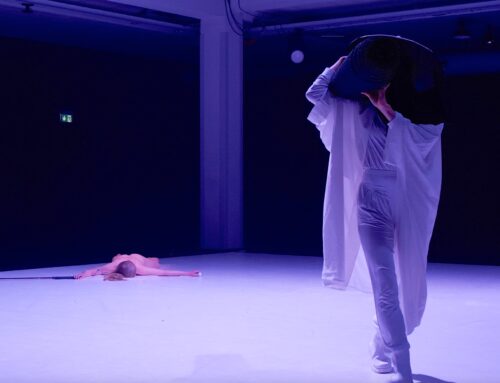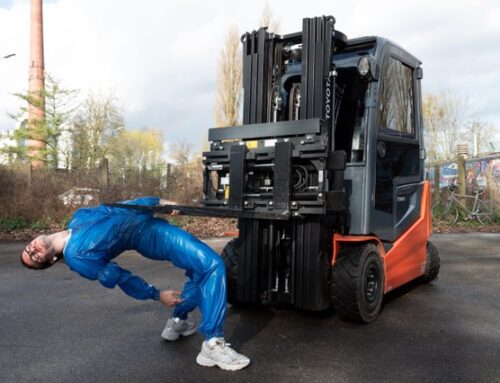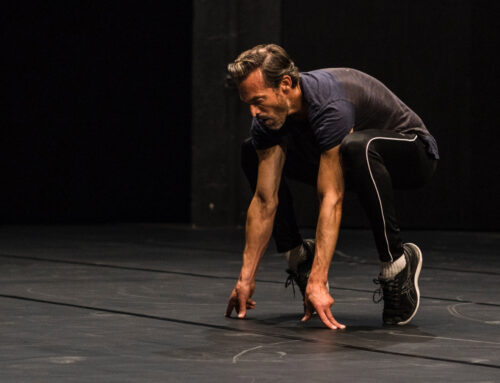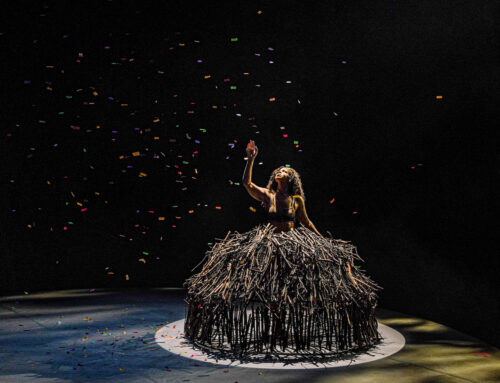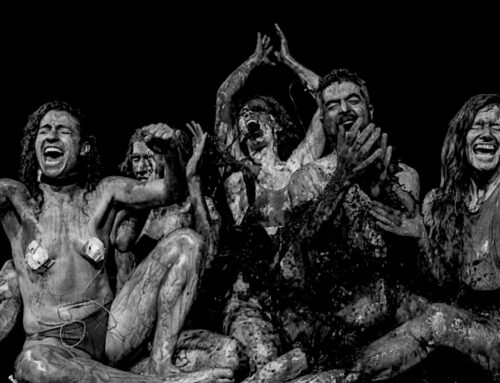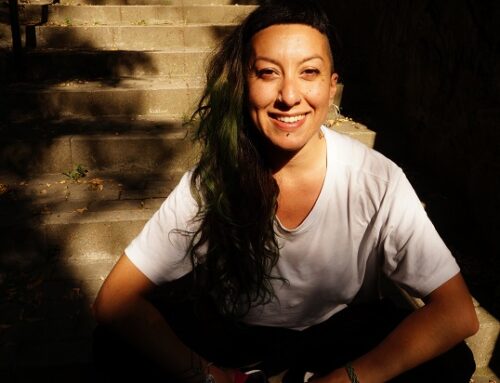schrit_tmacher justDANCE!
Gone with the wind
The end of this year’s schrit_tmacher festival in Aachen leaves the audience satisfied with „Flow“ by Linga & Keda
nightreview by Rico Stehfest
translated by Karoline Strys
Charming is here not the dance itself. It is the music, played live by E’Jong-Ju on a Geomungo, a Korean zither, and electronically mirrored by Mathias Delplanque. Since 2010 they are performing as the duo Keda. For “Flow“ they provide the rhythmic sound surface for a blowing, a hustle and bustle of an organic unity of seven dancers of the Swiss company Linga of Katarzyna Gdaniec and Marco Cantalupo.
Group dynamic observations from the animal kingdom serve as the official basis, movements of flocks of birds and herds of animals. But the movement patterns can also be interpreted as grass swaying silently in the wind. The associations emerge quickly and easily, so clearly arranged are the dramaturgy and the choreography. The delayed first appearance of the dancers seems like breathing, a rustle. Nature takes its time. A little bit of movement material from Chi Gong or Tai Chi, later, when the rhythm accelerates, one may recognize a few splashes of Capoeira.
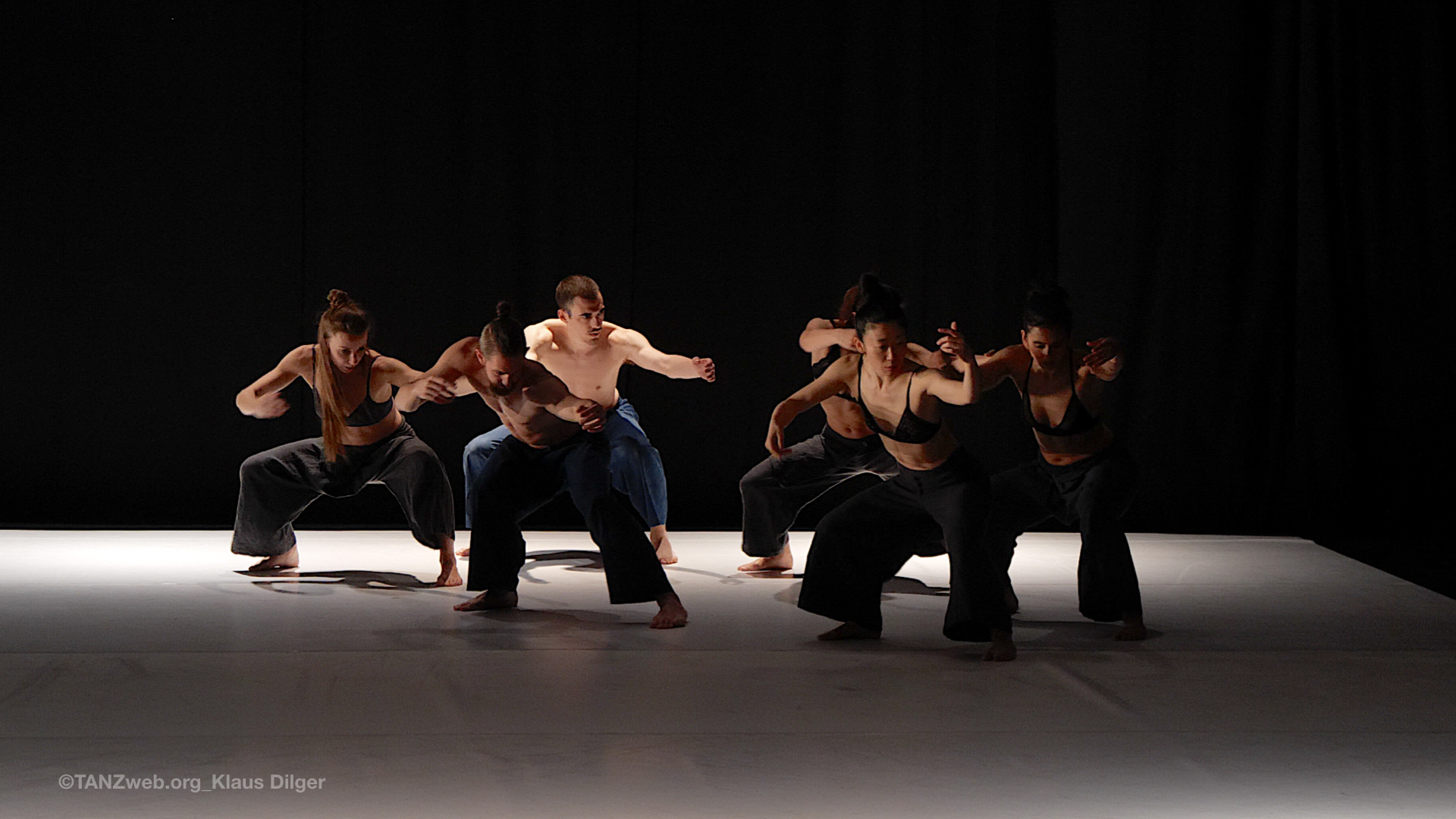
Linga FLOW©TANZweb.org_Klaus Dilger.016
These organics of unity, which display separation only in short moments, are clearly turned inward. The movement register, which is manageable in its complexity, functions entirely on its own, no communication necessary. Nothing more is needed in order to read the movements and inversions of the dynamics. This is relaxed but also without further statement, not to mention a development. The dancers drive each other around the stage in circles, sometimes one chases the other, sometimes someone runs ahead. Lifts bring variety but no further component to the statement.
In spite of all musical variations, which provide not only tender but also strong moments full of restlessness, everything remains restrained and silent. At some point it becomes clear that the calm of a casually flowing river can also be monotonous, despite possible rapids. Nevertheless, there is a break as the group dissolves and a single dancer performs a strikingly expressive solo, which then develops into a duo. But it soon becomes clear that there are character traits here, liberating the individual yet at the same time demanding. In the long run, this cannot be upheld by this concept. The individual components then very quickly attract each other again, only the mass endures but cannot be seen as a community in the social sense. Solidarity is intuitive, not intentional; the individual does not appear here.
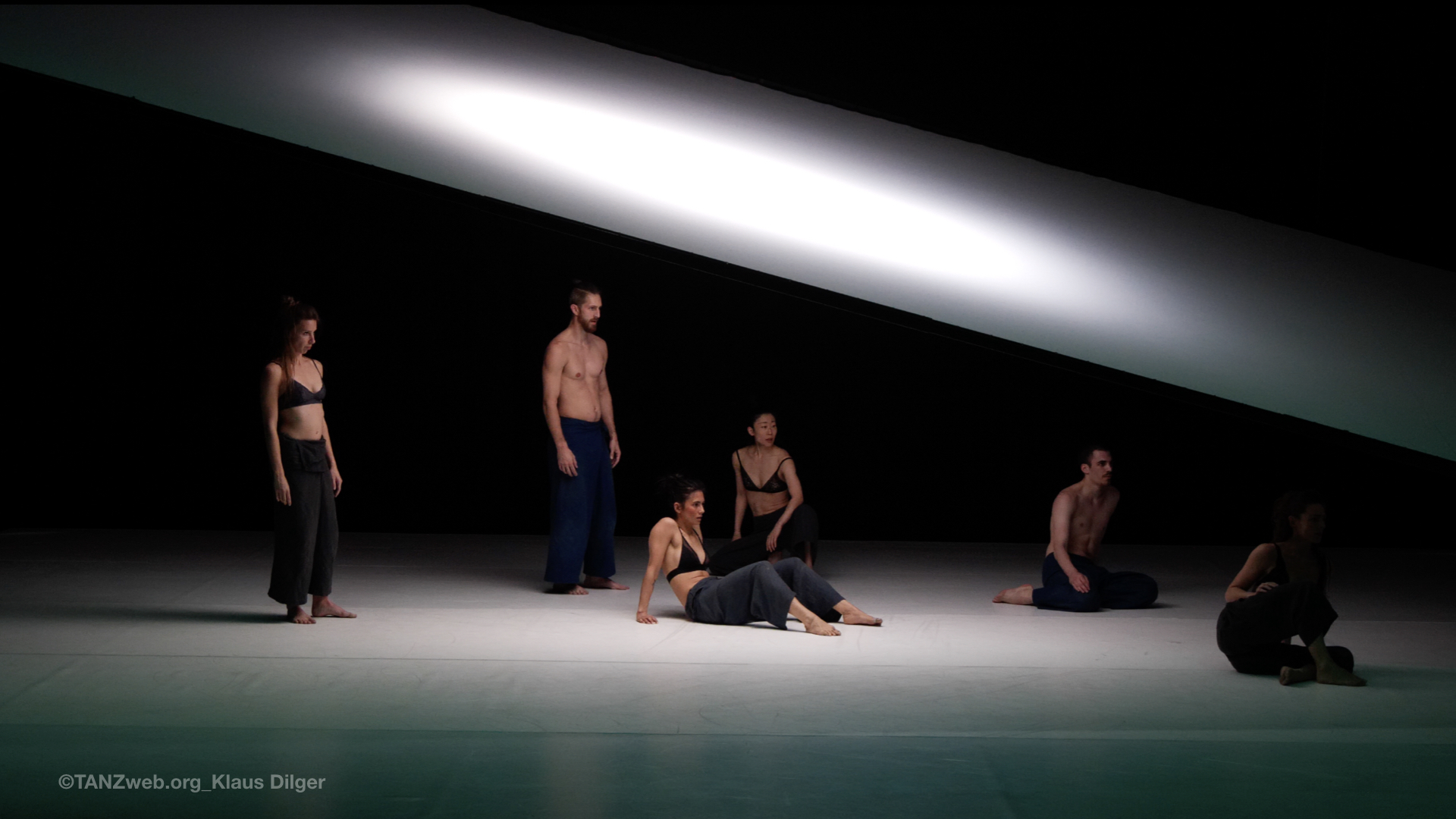
Linga FLOW©TANZweb.org_Klaus Dilger.016
The absence of a development or a change leaves „Flow“ persistent in pointing out a single moment, a single thought. In the course of an hour, this appears a bit little, especially since the movement vocabulary is exhausted quite quickly. The ensemble is also exhausted, whose energy does not remain at the necessary level until the end. This is a little bit disappointing. So everything dissolves into repetitions, which work arbitrarily, and the flow dries up. The audience in Aachen was nevertheless grateful and enthusiastic.
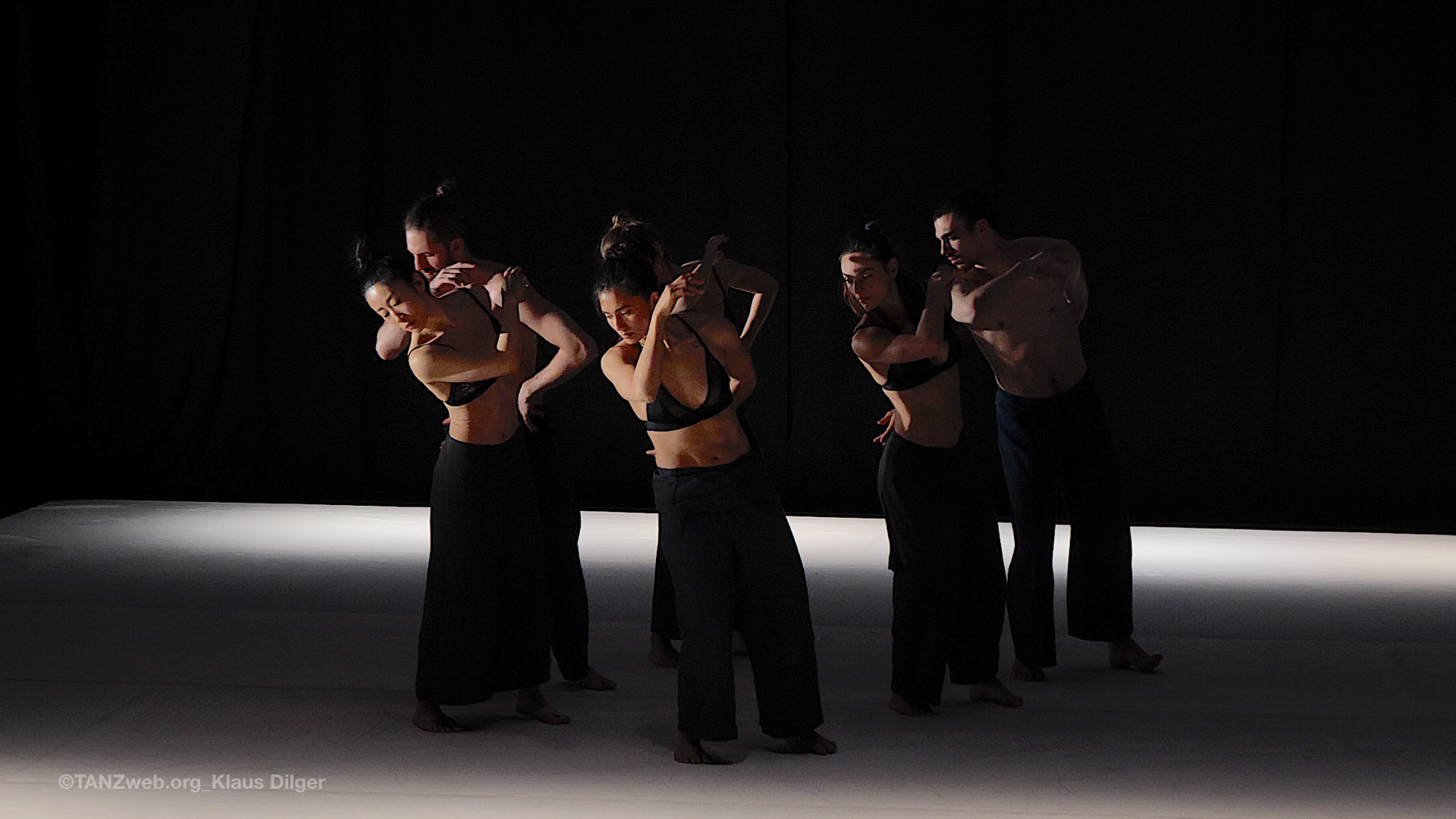
Linga FLOW©TANZweb.org_Klaus Dilger.016

